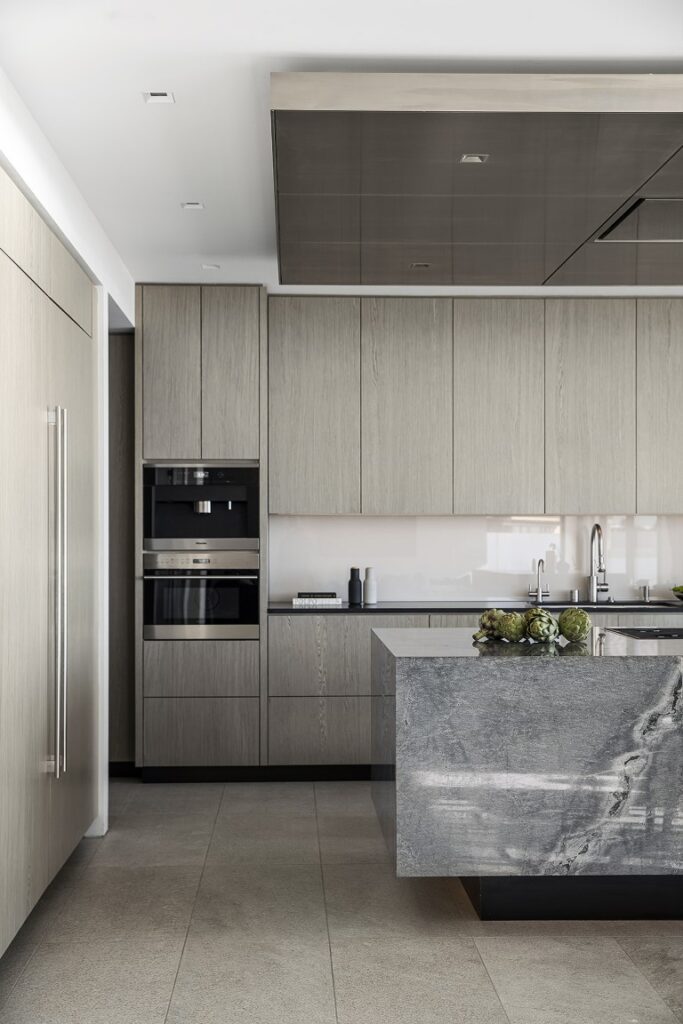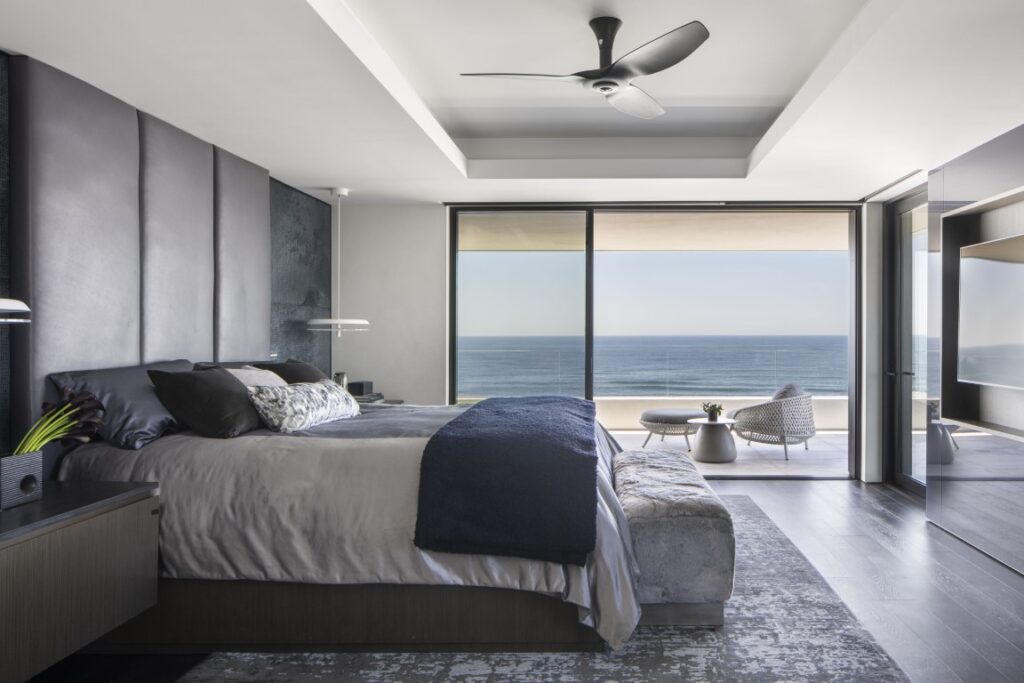Rather than demolishing the entire 1970s home that stood on this Solana Beach, California bluff overlooking the Pacific Ocean, Hayer Architecture’s design folded in some of the original structure. “Coastal setback and city zoning requirements for new construction would have greatly decreased the size and negatively impacted the location of a new residence in terms of capturing views,” architect William Hayer explains.
Hill Construction Company, which built the home for the family of five who relocated from a nearby community, seamlessly blended those original elements with Hayer’s new design. The firm brought Hayer’s strong contemporary design to life, making the most of the stunning views within state regulations and coastal requirements.


The key? A symbiotic relationship between indoor and out. A consistent materials palette makes the design feel cohesive. Hayer collaborated with interior designer Anita Dawson in choosing interior and exterior finishes. “I wouldn’t necessarily say one drove the other,” the architect says when asked which set of finishes came first, interior or exterior. “The materials have to work in concert from inside to outside with an indoor-outdoor design such as this.”
A linear pattern of concrete pavers that alternate with skinny strips of pebbles define the entry court, where a fire pit faced in Ocean Blue lava (a material that repeats on portions of the façade) and concrete planters set against an illuminated black stone backdrop offer instant ambiance. Snow White quartzite makes up the stairs that lead to the large, frosted-glass pivot door, then beyond it, running underfoot throughout the main level, out to the back patio. “The home takes a beating with salt spray, so we needed strong durable materials inside and out,” Dawson says.




The foyer opens into the dining room. Here, a rusty-orange table pops in front of a glass enclosure with raked limestone tiles that displays wine, two bottles deep, on a black metal shelving system. “They needed conditioned wine storage, but the open floor plan didn’t lend itself to a separate room, so we turned it into a design feature,” Dawson says. The top is quite spare; the lower (less visible) half is more utilitarian.
The condenser hides in the adjacent console with black granite top that pushes through the glass enclosure. “I don’t like when pieces just end,” Dawson says. “I need them to pick up again.” The treatment highlights the designer’s stone-wrapped built-ins, which in turn reinforce what she calls “the solid, masculine masses” of Hayer’s architecture.


An expanse of Ocean Blue lava—the floor-to-ceiling fireplace surround—anchors the living room. Walnut ceiling panels, a thick, patterned carpet, and plush, espresso-colored linen velvet upholstery soften the swathes of stone, as do the forms of the sofas themselves. “The homeowners wanted lounge seating, but a square sectional would have pinched circulation to the patio,” Dawson says. Her solution? Modular seating in organic shapes by San Francisco–based furniture designer Jiun Ho.
Dawson plays with geometric volumes of wood and stone in the kitchen, too. While bleached wood cabinetry and a back-painted glass backsplash blend into the background, the Ocean Blue lava island floats above a recessed black plinth, and a walnut peninsula offers casual ocean-front dining. “The perpendicular orientation of the table allows more people to face the view,” the designer points out. “It’s also another way of accentuating the building’s many right angles.”








Tucked around the corner from the wine display, in the middle of the house, a floating staircase rises from a pebble floor that ties to the exterior entry area. Charcoal-stained oak treads meet charcoal-stained oak floors and doors on the second level, contrasting with the white Venetian plaster walls.
The large primary suite dominates the back half of the upstairs. The bed is sheltered within a cozy niche, its ebony leather headboard reaching the ceiling. Opposite, the hazy-blue back-painted glass wall echoes the ocean view. An oversize slider opens wide to the covered patio, blurring the lines between indoors and out as effectively as the floor-to-ceiling sliders in the living spaces downstairs.


In the bath, Dawson incorporates massing that relates to the blocky architecture. The monolithic black granite tub fills a glorious glass corner, wraps a wall of book-matched marble, then pierces the frameless glass shower enclosure, turning into a bench. The designer likens marble slabs to artwork, noting that this particular one, with its graphic marks, is reminiscent of an etching.
The kids chose the stone slabs for their bathrooms, where Dawson used white pebbled tile on the floor and designed a waterfall vanity that just pushes through the shower’s glass divider.
“I’m nothing if not consistent,” she laughs. It makes for good modern design.


